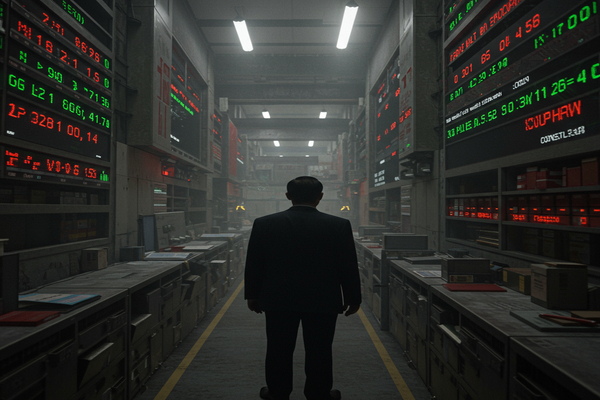
Trump’s Asia trip pushes rare earths and tariffs into focus. He signed supply deals with Japan and announced new trade commitments that aim to loosen China’s hold on critical minerals. The moves matter now because they lower near-term tariff risk while raising long-term supply chain competition. Globally, the measures affect U.S. tech and defense supply chains, Japan’s industrial base and emerging markets that export minerals. Historically, the episode follows a period of triple-digit tariff threats and a fragile six-month truce that markets priced in this year.
Rare earths pact and its market significance
The headline outcome from the Tokyo stop was a pledge to boost supplies of critical minerals and rare earths. The goal is to reduce dependence on Chinese exports that power electronics, electric vehicles and defence systems. For markets, the immediate effect is a change in risk allocation for sectors reliant on those inputs.
Short term, the announcements ease a major policy overhang. Companies can plan procurement with less fear of sudden export curbs or counter-tariffs. That reduces margin risk for chipmakers and other electronics suppliers that had been pricing in supply shock premiums. Long term, the agreement signals a strategic push to diversify sources, which could raise capital spending in mining, refining and processing outside China.
The move also follows recent episodes when Beijing restricted exports and the United States threatened sweeping countermeasures. Past waves pushed buyers to stockpile components and to accelerate sourcing shifts. If new supply lines scale, raw material prices could fall from recent highs, but that outcome depends on investment timelines for mining and refining capacity.
Trade talks, tariff truce and market reaction
On trade, the trip set the stage for a key meeting with Chinese leader Xi Jinping that aims to lock in a broader truce. U.S. officials say talks have produced a framework that removed the immediate threat of a 100% tariff scheduled for November 1. Markets reacted positively. The S&P 500 hit a record high as investors priced a lower near-term risk of tariff escalation.
Still, the situation remains brittle. Chinese export controls on rare earths and any renewed U.S. tariff threats could unravel the current truce. In recent weeks importers routed shipments to avoid potential tariff spikes, creating inventory swings that temporarily distorted trade flows. That dynamic can translate into erratic earnings reports for distributors and retailers if tariffs or export curbs return.
Market breadth suggests traders are favoring growth sectors. Analysts expect September-quarter earnings growth of roughly 10% year over year for S&P 500 companies, led by large technology firms benefiting from AI investment. That sector concentration helps explain why equity indices have climbed even as consumer confidence has softened for lower-income households.
Corporate impacts and sector winners and losers
Certain companies will feel the effects more directly. Ford (NYSE:F) was singled out in the trip when Japan agreed to buy F-150 pickups. That announcement is symbolic more than material for Ford’s Japan sales, given the vehicle’s size and Japan’s road constraints. Nevertheless, it underscores defence and industrial cooperation themes that could open contracts or supply roles for U.S. automakers.
Tariff swings already showed up in corporate results. Footwear and apparel firm Adidas (XETRA:ADS) reported a $140 million hit to operating profit from U.S. tariffs. Automobile makers are watching headline rhetoric closely. Mercedes-Benz Group (XETRA:MBG) leadership has signaled a push to strengthen sales in China and the United States, even as geopolitical noise could complicate pricing and supply decisions.
Companies in mining, materials processing and refining are natural potential beneficiaries if governments back reshoring or build alternative supply chains. Financial markets have priced some of that potential into equities and commodity plays. However, the timing between diplomatic commitments and measurable increases in non-Chinese supply capacity can be long. Investors should expect transitional volatility as projects move from announcement to production.
Macro context, pockets of strength and market implications
Macro data present a mixed picture. U.S. consumer confidence has slipped to a six-month low. Household spending patterns show resilience at the top of the income distribution while lower-income groups are more exposed to price increases, including those linked to tariffs. That divergence matters for consumption-sensitive sectors and for how policy makers interpret economic momentum.
Currency and equity markets have already reacted in varied ways. The Canadian dollar strengthened and Canadian equities remained near record highs even after fresh tariff remarks targeting Canada. That reaction reflects how local factors and investor positioning can override headline threats when the perceived odds of escalation fall.
For global markets, the current environment reduces the probability of an immediate, wide tariff shock. That helped risk assets rally. Meanwhile, the structural policy objective to diversify rare earth supplies creates winners and losers over the longer run. Countries and firms that secure alternative sources or build processing capacity stand to gain market share. Those that remain tied to a single dominant supplier could face higher costs or intermittent access risks.
What investors and companies are watching next
In the coming days, investors will focus on the South Korea meeting and any specifics that turn the trade framework into enforceable commitments. They will also watch for any Chinese response on export controls. If Beijing tightens restrictions, short-term volatility in raw material and technology supply chains could spike again.
Companies will be tracking procurement timelines and near-term inventory dynamics. Importers who rushed goods to avoid tariffs may face sales timing and margin effects. Producers considering new outside-China capacity will be assessing capital intensity and regulatory support from partner governments.
Overall, the combination of a reduced near-term tariff threat and a renewed push to diversify rare earth supplies has eased one set of market risks while opening a longer term strategic contest over critical inputs. That duality matters for asset allocators, corporate planners and governments trying to balance immediate stability with industrial resilience.












